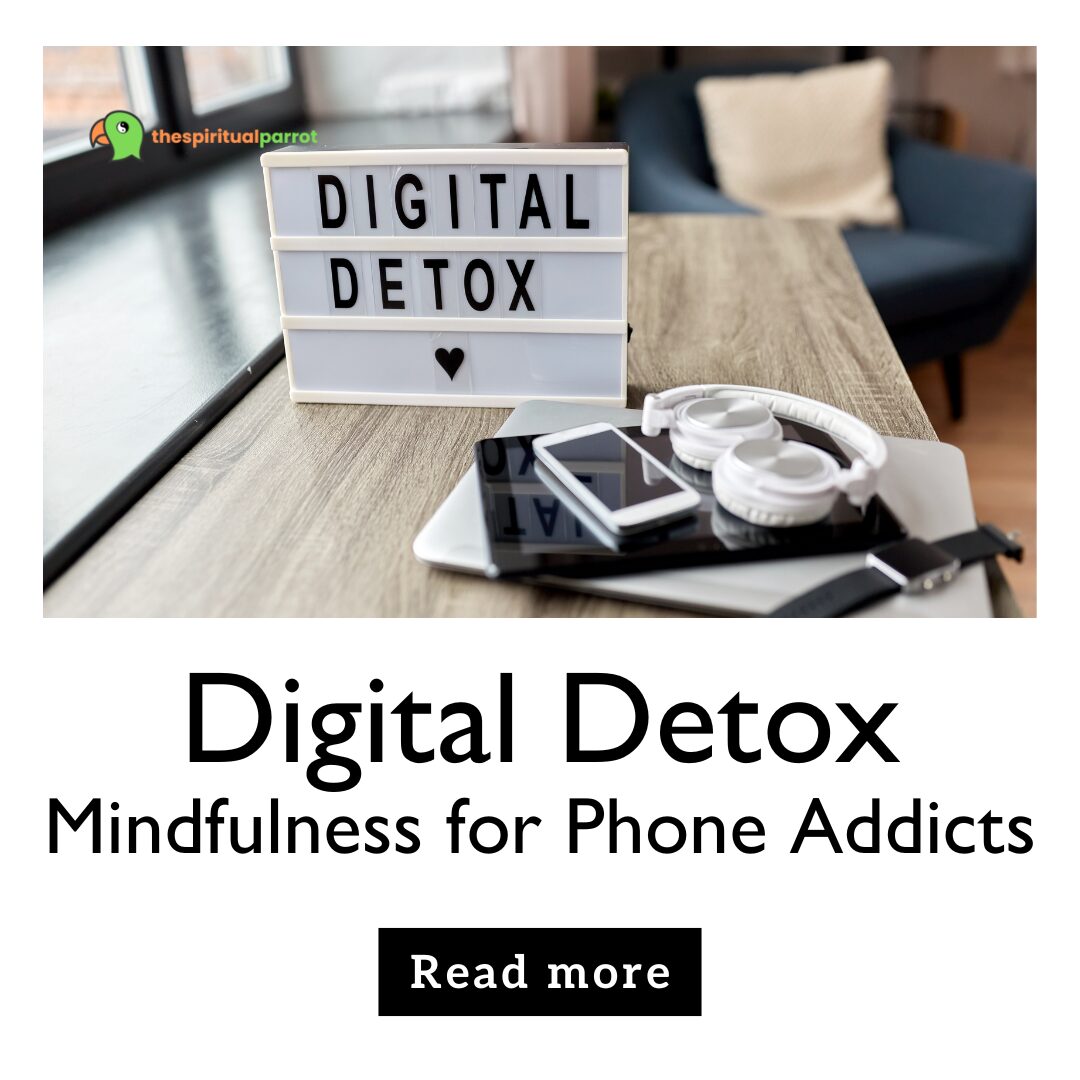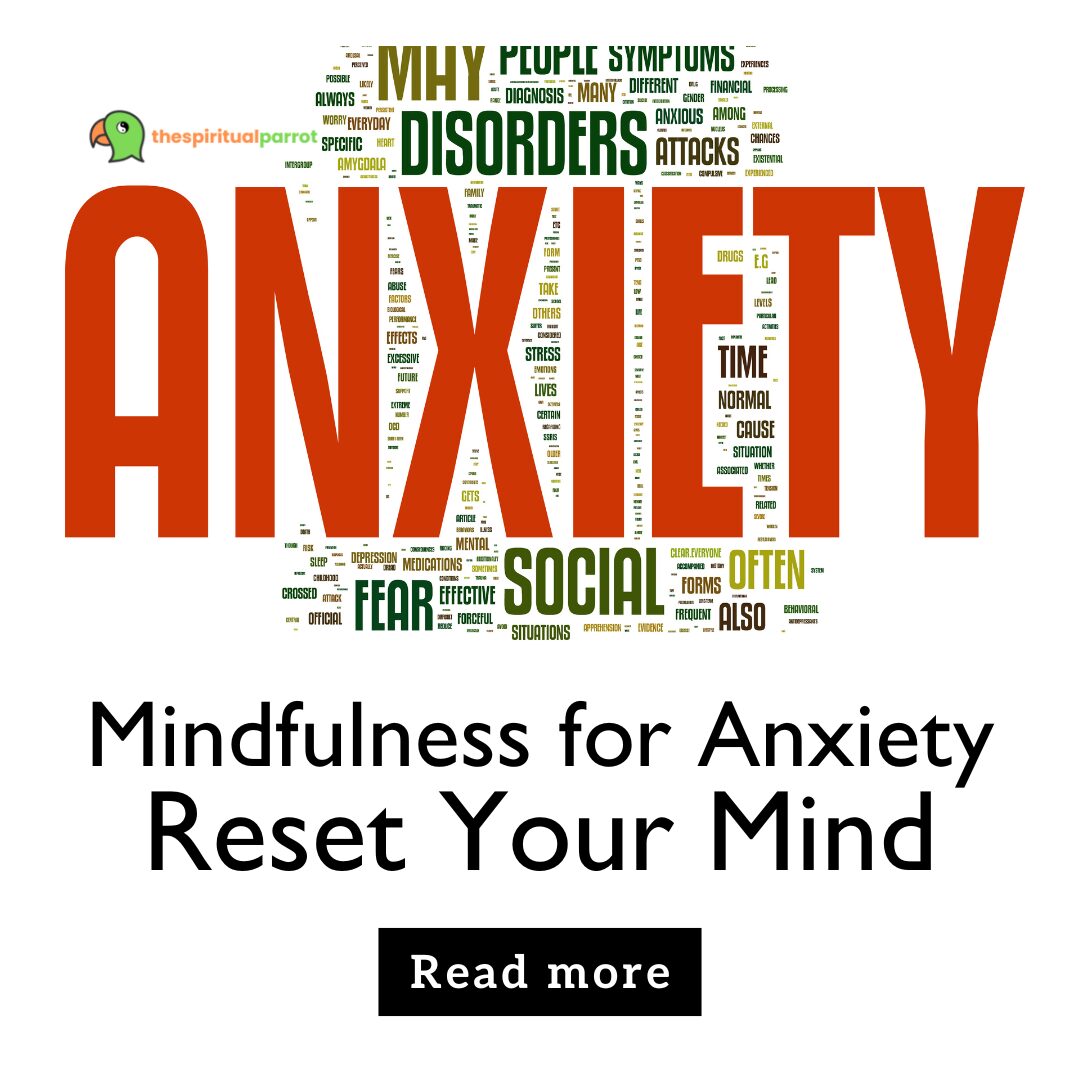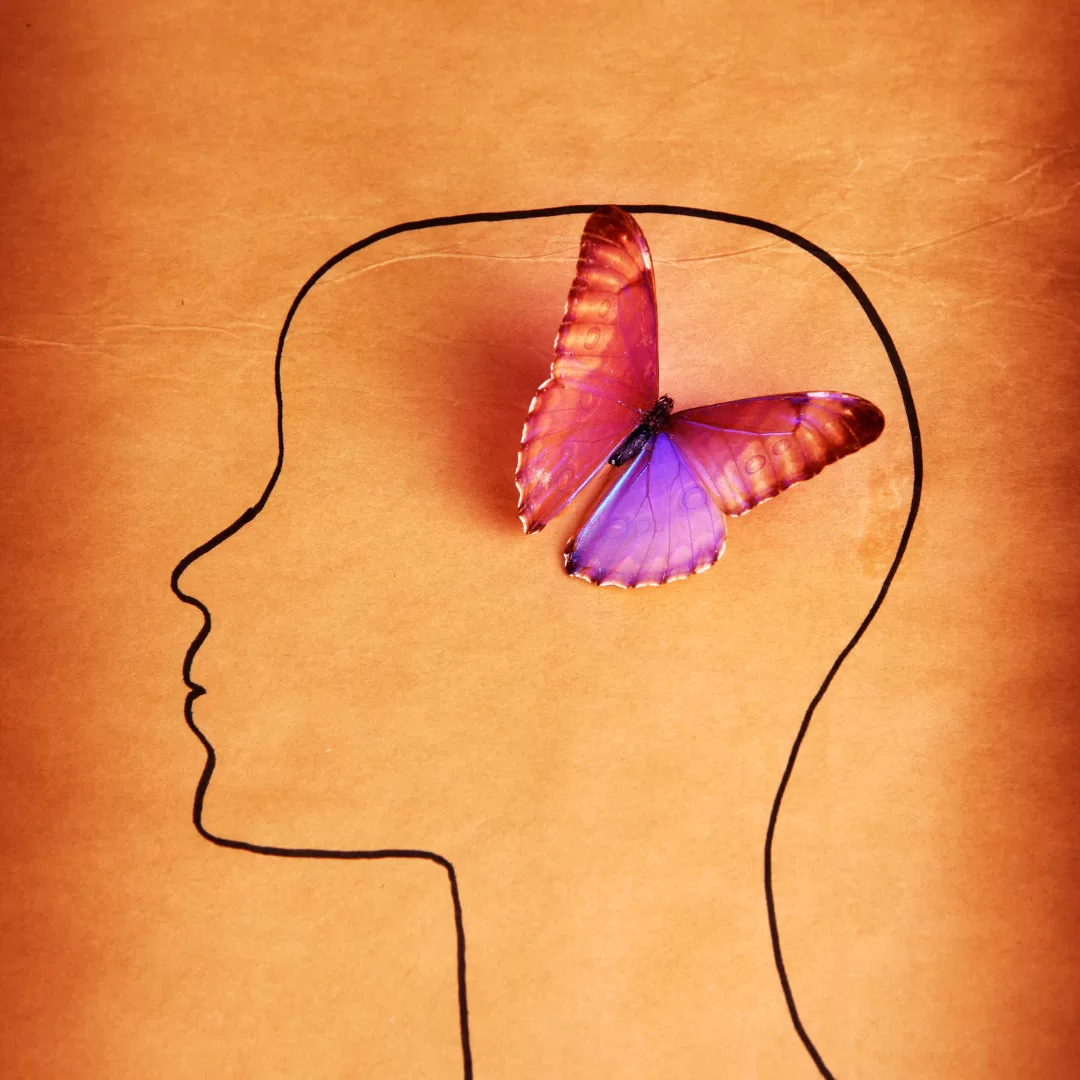Digital detox mindfulness isn’t just a wellness buzzword—it’s a quiet rebellion against the noise that never seems to end. If you’ve ever found yourself mindlessly unlocking your phone without knowing why, or feeling more drained after scrolling than before, you’re not alone.
The average person checks their phone over 100 times a day. And while technology connects us in amazing ways, it also scatters our attention, clutters our peace, and distances us from the present moment. Mindfulness, on the other hand, invites us back—to stillness, to clarity, and most importantly, to ourselves.
This post isn’t about tossing your phone out the window. It’s about using awareness to reclaim your relationship with it. Whether you’re looking to improve focus, sleep better, or just breathe a little deeper without a notification buzzing in your ear, this journey starts with one small step inward.
What Is Digital Detox Mindfulness?
Digital detox mindfulness is the act of intentionally stepping away from screens — especially your phone — in an effort to reset and reconnect with yourself and the space around you. It’s not that you have to forsake technology, but that you learn to use it deliberately rather than mindlessly.
Consider it this way: Every time you scroll mindlessly, you outsource your attention. Digital detox mindfulness reclaims that attention home. It enables you to observe the impulse to check your phone before you give into it. To pause. To question: Do I truly need this at this moment? Or am I evading something?
This technique combines two elements — a digital detox (a break from screens) and mindfulness (fully engaging in the present moment). When you combine them, you don’t just cut screen time — you begin to change what “screen time” means.
You don’t even have to disappear from the grid for weeks. Even brief but deliberate interruptions in your day can produce a noticeable difference in your clarity, calm, and confidence.
How Phone Addiction Affects Your Mind and Energy
Our phones were designed to keep us hooked. With every buzz, like, and scroll, they offer little bursts of stimulation that train the brain to crave more—even when there’s nothing meaningful to gain. And over time, that constant interaction comes at a cost.
Cognitive Impact of Constant Scrolling
When your attention is split between multiple notifications, apps, and screens, your mind never fully settles. This leads to:
- Reduced attention span
- Difficulty focusing on a single task
- A scattered or foggy headspace
- Mental fatigue that feels like burnout
It’s not that your brain is failing—it’s that it’s overwhelmed. Multitasking with technology doesn’t make us more productive. It actually fractures our ability to think clearly and stay present.
Emotional Burnout and Energy Leaks
Beyond mental clutter, there’s emotional exhaustion. Doom scrolling, comparison on social media, or exposure to constant information can leave you feeling drained—even if you’ve just been “resting.”
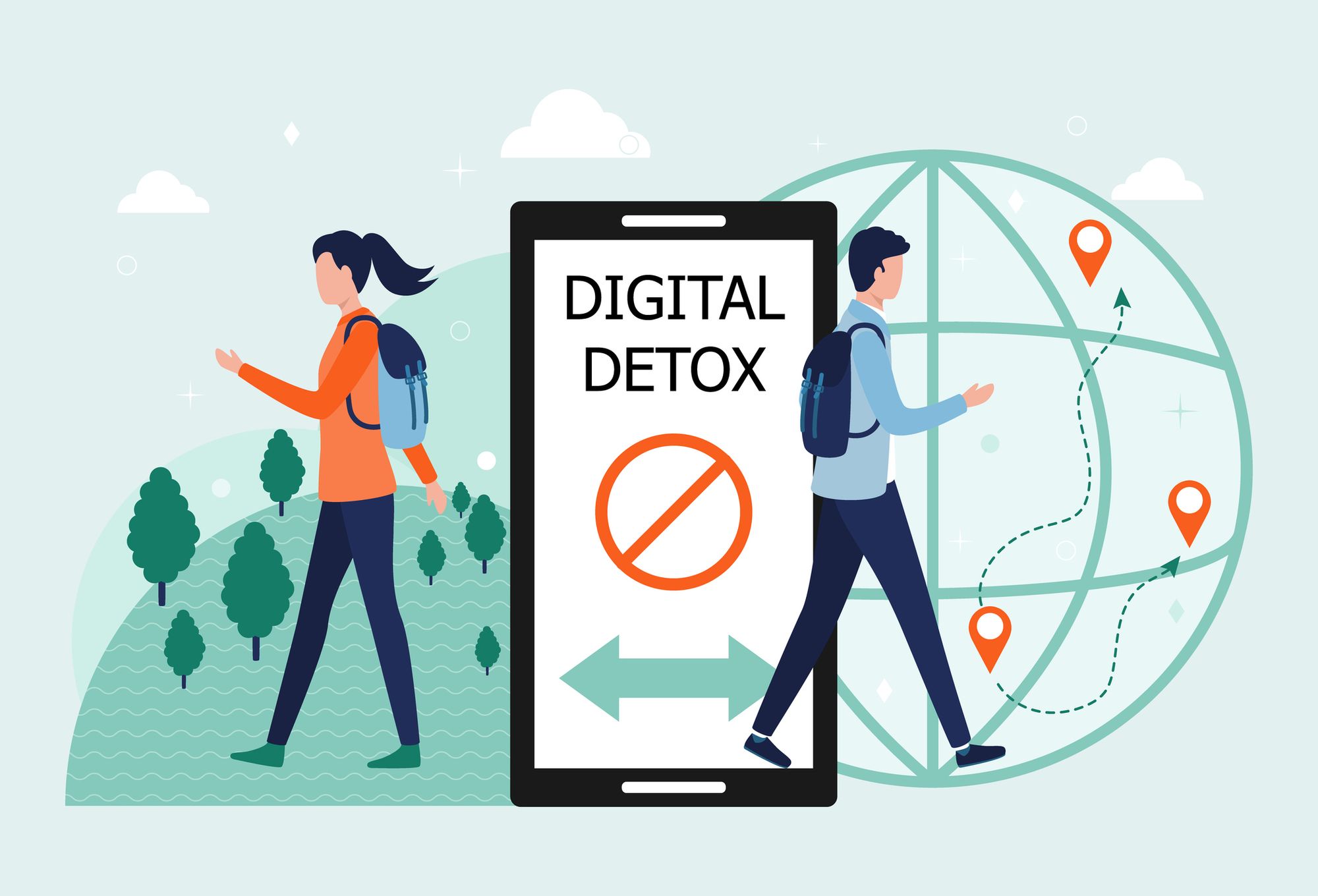
You might notice:
- Feeling anxious for no clear reason
- Mood dips after long periods on your phone
- Difficulty sleeping or relaxing
- A general sense of emptiness or overstimulation
Energy isn’t just physical—it’s emotional and spiritual too. And phone addiction slowly chips away at that energy without you realizing it.
Benefits of Practicing Digital Detox Mindfulness
The beauty of digital detox mindfulness isn’t in cutting yourself off from the world—it’s in finally coming back to yourself. With each intentional break from your screen, you create space. And in that space, your mind, body, and spirit can breathe again.
Regaining Attention Span
Even a short screen-free ritual—like five minutes of breathwork or mindful sipping of your morning tea—can begin to rewire your brain for focus. Over time, you’ll notice it’s easier to read, listen, or just be with one thing at a time. Your concentration sharpens because you’re no longer stretching your attention across twenty tabs—physically or mentally.
Reconnecting with Self and Environment
When your phone is down, your awareness turns outward—and inward. You start noticing the details: the way the light hits your room in the morning, the pace of your own breath, the subtle cues your body sends you. You reconnect with a rhythm that’s slower, deeper, and far more human.
Better Sleep, Mood, and Creativity
Screens disrupt your sleep cycles and flood your mind with stimulation. Taking mindful tech breaks—especially in the evening—can improve how well you sleep, how gently you wake, and how calmly you move through your day. Many people also find their creativity returns once they clear the noise. Ideas, inspiration, and emotional clarity have space to show up again.
Simple Daily Practices to Start Your Detox
You don’t need to escape to the mountains or lock your phone away for weeks. Digital detox mindfulness begins with the little choices you make each day—choices that invite stillness, intention, and presence back into your life.
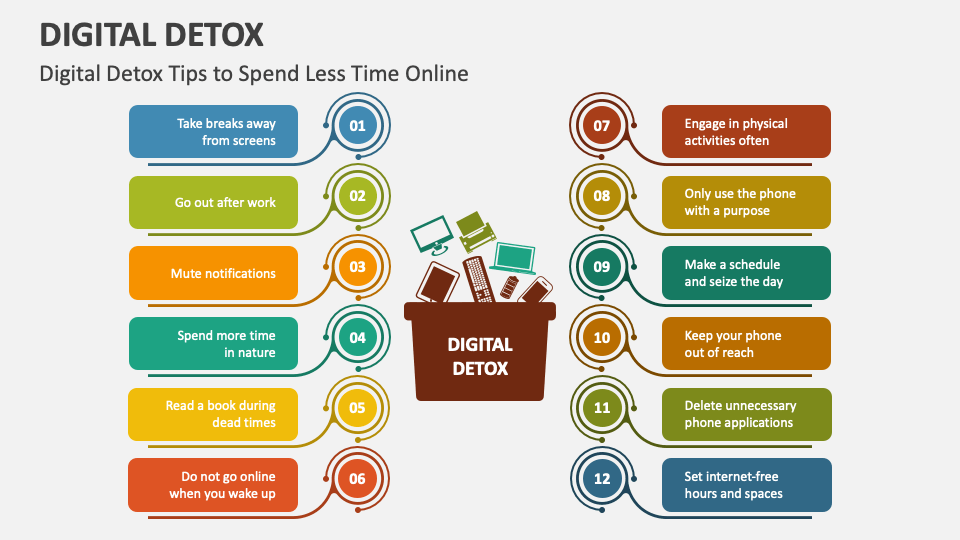
5-Minute Screen-Free Mindfulness Ritual
Start your day without reaching for your phone. Instead, sit by a window, close your eyes, and take five slow, deep breaths. Notice how your body feels. Listen to the sounds around you. Let those few minutes anchor you before the digital world enters.
Tech-Free Mornings or Evenings
Choose one part of your day—either the first hour after waking or the last hour before sleep—to be screen-free. Use that time to stretch, journal, cook, or simply sit in quiet. That boundary helps reset your nervous system and reclaims your time as your own.
Nature Breaks and Breathwork Sessions
Whenever you feel the urge to scroll out of boredom or stress, try stepping outside instead. Even a five-minute walk or a moment with your feet on grass can recharge you better than a news feed. Pair that with a short breathwork session—like 4-4-4-4 box breathing—and you’ll feel grounded again, without the dopamine crash.
These tiny rituals, done daily, begin to shift your relationship with your device. They don’t force you to quit—just to choose more consciously.
Tools That Can Help You (Without Replacing Mindfulness)
Mindfulness is about presence—not productivity hacks. But sometimes, a little support can go a long way in helping you stay intentional with your screen time. The key is choosing tools that encourage awareness, not dependency.
One gentle nudge comes from apps that turn screen-free time into a mindful practice. For example, there’s an app where you plant a tree that grows only if you don’t touch your phone—many people find it turns a small moment of resistance into a quiet ritual of commitment.
💡 [Insert hyperlink on: “an app where you plant a tree” → link to Forest app affiliate]
If you struggle with constant switching between apps or get sucked into social media without meaning to, consider a tool that blocks distractions across devices for a set period. These blockers aren’t harsh—they just help you create space between impulse and action.
💡 [Insert hyperlink on: “a tool that blocks distractions” → link to Freedom app affiliate]
Even something as simple as turning your phone to grayscale or setting it to “Focus Mode” during certain hours can act as a visual reminder to slow down and stay rooted.
That said, no app can replace your own intention. These tools are just gentle companions. The real transformation still comes from how you choose to meet each moment—digitally or not.
Ready to Begin Your Digital Detox Mindfulness Journey?
You don’t need a perfect plan. You just need one mindful moment—and the willingness to begin.
Digital detox mindfulness isn’t about quitting your phone forever. It’s about choosing to be more awake while using it. It’s about noticing when your attention drifts, and gently bringing it back to where you are, who you are, and what truly matters in that moment.
Start small. A few screen-free minutes in the morning. A walk without headphones. A meal without scrolling. These pauses aren’t empty—they’re invitations to reconnect with the real world: your thoughts, your senses, your breath.
And if you slip? That’s part of the practice too. The goal isn’t perfection. It’s presence.
So breathe. Unplug. Begin again.
